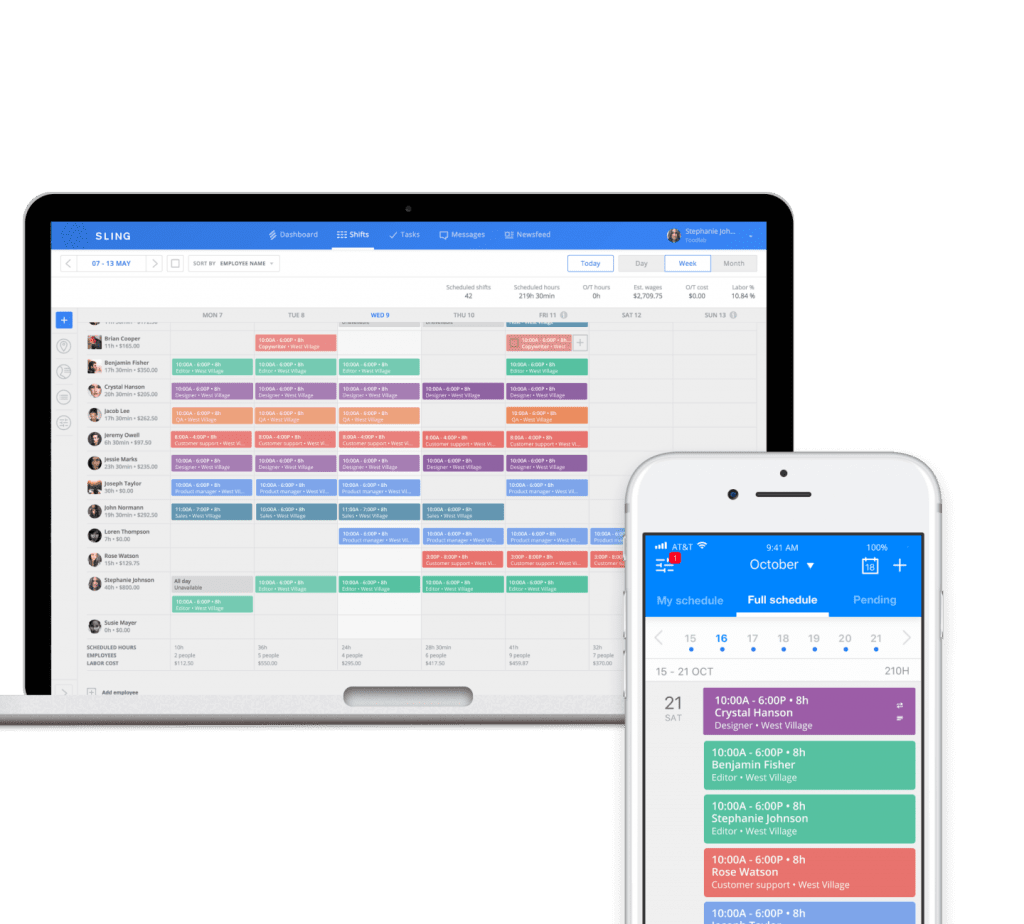PTO Accrual: What It Is And How To Calculate It
Calculating PTO accrual can be a confusing and labor-intensive task. But every m...

As a manager or owner, you may be curious about what the average vacation/PTO time is and if your business is offering enough.
This type of benefit — time off for personal reasons — is very common, and very popular, among management and employees alike. But there is a very real concern that your business may be giving away more than is good for its bottom line.
What’s the best way to structure a program of this nature so that everyone is happy?
In this article, the workforce management experts at Sling discuss average vacation/PTO time in detail so you can make the best decision for your business.

When it comes to average vacation/PTO time, vacation usually refers to a set number of days off in a few specific categories.
For example, your business may offer vacation time in the following groups:
Your business can apply any number of days to those groups that makes sense for the work schedule you keep.
So, if your business uses those five categories listed above, you might choose to give:
Once the program starts (e.g., the first of the new year), if an employee is out of the office for two days in March because of the flu, they can choose to deduct those days from their sick leave total (leaving them with five for the rest of the year).
Your business would then have to pay the employee for a full day’s work even though they were at home sick. The same goes for the other categories on the list.
PTO stands for “paid time off” or “personal time off” and consists of a block of paid time off that team members can draw from throughout the year.
So, instead of your business creating categories and assigning a certain number of days to each (as in vacation time), you lump all the days together and present each employee with a block of time they can use however they see fit.
If we stick with the example from the previous section, your PTO block might consist of 25 days total of paid time off that team members can divide up as needed.
One employee may choose to take 10 days of paid sick leave, 10 days of paid personal leave, and five days of paid vacation.
Another employee may choose to take three days of paid sick leave, one day of paid personal leave, and 10 days of paid vacation.
It all depends on what each employee needs.

Even though you can customize your average vacation/PTO time program as you see fit, most businesses offer a similar amount.
For vacation time, most United States employers offer:
This type of package works well with the more typical Monday-Friday, eight-hours-per-day, full-time workweek.
If your business operates on a different schedule (e.g., 9/80, part-time, compressed workweek, night shift, split shift, etc.), you may find that other numbers (or other categories) work better.
Most businesses don’t offer paid inclement weather days, but if your business is located in an area where travel is difficult when certain types of weather hit, you may want to incorporate this option in your time-off program.
When it comes to PTO, most businesses offer 30 days of paid time off per year.
As mentioned, employees can use these days however they choose, but it benefits your business to establish some guidelines in your employee handbook so team members don’t abuse the benefit.
Examples of policies that govern average vacation/PTO time include:
These are just a few policies that can help make your time-off program run as smoothly as possible.
As we mentioned in the previous section, most businesses don’t offer paid inclement weather days as part of their vacation program. However, you should be aware that employees may use PTO for this purpose if you don’t set a policy prohibiting it.

Setting up an average vacation/PTO system involves more than just picking numbers, doling them out, and calling it a program.
You’ll also need to consider such variables as:
As with the average vacation/PTO time itself, you can customize these variables to suit your business.
Some businesses, for example, start out with less-than-average PTO and award more based on the number of years an employee has worked with the company.
Similarly, some businesses roll unused days over into the next operating period as a way to reward good attendance.

There is no right or wrong when it comes to average vacation/PTO time. It all depends on what’s right for your business.
The simplicity of a straightforward block of PTO that your team members can use as they see fit is certainly a draw for most managers. But, again, that may not be the best fit for your employees and your business.
You may find it more beneficial to structure your time-off program around:
This example is drastically different from the average vacation/PTO time program that most businesses offer, but it illustrates that you can customize your time-off package however you see fit.
Plus, there’s no law that says you have to stick with a program that doesn’t work. Feel free to tweak and refine the rules of your time-off system if you find that another method works better.
As long as you transfer any unused vacation days or PTO from the old system to the new, your team members may not even notice the difference.

Keeping track of the average vacation/PTO time you set for your business, however, can take up a lot of your HR department’s time if you don’t take steps to streamline the process.
The Sling app can help.
With Sling’s advanced employee scheduling features and management tools, you can quickly handle all of your business’s vacation/PTO time tracking and leverage your time effectively.
Take care of employee scheduling, monitor your labor spend, and communicate with employees all in one platform.
Whether you’re managing a team of 5 or 500, Sling will save you valuable hours. With just a few clicks, you can approve time-off requests, find coverage for shifts, and seamlessly track labor costs while staying on budget.
All of Sling’s cloud-based features — from schedule creation to time clock to payroll calculations — make it easy for you to create the best schedule possible, distribute it with ease, make changes, and juggle vacation time for maximum efficiency.
Sling even provides suggestions and warnings when you’ve double-booked a team member or created a conflict in another part of your schedule.
All of this makes Sling the best shift planning software for simplifying your business’s work schedule, tracking average vacation/PTO time, and giving you more time to focus on guiding your business to success.
For more free resources to help you manage your business better, organize and schedule your team, and track and calculate labor costs, visit GetSling.com today.
See Here For Last Updated Dates: Link
This content is for informational purposes and is not intended as legal, tax, HR, or any other professional advice. Please contact an attorney or other professional for specific advice.
Schedule faster, communicate better, get things done.